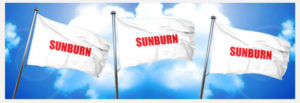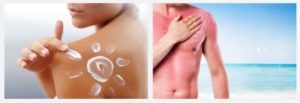
Consumer Reports Top 5 Sunscreens
Written by The Monster Coupon Book on Wednesday, June 6, 2018

Is your Sunscreen on the top 5 list?
Consumer Reports tested over 60 sunscreen lotions, sprays, sticks and lip balms in 2017. The purpose was to show consumers that you can’t always rely on the SPF number labeled on the bottle. The sun produces 2 types of rays that damage the skin cells and can cause skin cancer. UVB rays (ultraviolet B) cause sunburn and contributes to skin cancer, UVA rays (ultraviolet A) tan and age the skin and can also trigger skin cancer. SPF (sun protection factor) measures the protection from UVB rays and how long the sunscreen will protect you. To protect your skin from UVA and UVB rays, you need to use a broad spectrum sunscreen.
Unfortunately, there are no sunscreens out there that can protect you 100% from the sun’s rays. The closest you can get is an SPF 100, which will block 99% of UVA & UVB ray.
23 of the 62 products that Consumer Reports tested were at less than half their labeled SPF number, which simply means you may not be getting the full protection you think you’re getting. Apparently, this is normal. In the past 5 years that Consumer Reports has been testing sunscreens, they’ve tested at half their SPF number. And natural sunscreens, which contain only titanium dioxide, zinc oxide or both as an active ingredient, tend to perform less than sunscreens that have chemical active ingredients. None of the natural sunscreens they tested in 2017 did well enough to make their list!
Consumer Reports rates these as its top five sunscreens:
- La Roche-Posay, Anthelios 60 Melt-in Sunscreen Milk, $36
- Trader Joe’s Spray SPF 50+, $6
- Equate, Sport Lotion SPF 50, $5
- Pure, Sun Defense Disney Frozen Lotion SPF 50, $6
- Banana Boat SunComfort Clear Ultramist Spray SPF 50+, $10T
The full rankings are available in the July 2017 issue of Consumer Reports.
Some tips they gave when using sunscreen:
- Shake the bottle, this will help distribute the active ingredients.
- Application – 15 to 30 minutes before you go outside and reapply every 2 hours, after swimming and/or sweating.
- Spray Sunscreen – Experts are saying to avoid using sprays on children and DO NOT spray directly on your face. The FDA is exploring the risks associated with inhaling spray sunscreens. It’s best to spray the sunscreen into your hands and then apply.
SOURCE: https://www.consumerreports.org/cro/sunscreens/buying-guide



